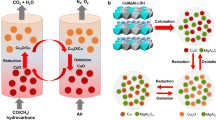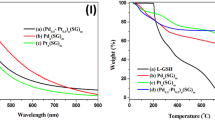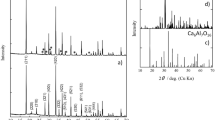Abstract
Hydrogen is an essential component in many industrial processes. As a result of the recent increase in the development of shale gas, steam reforming of shale gas has received considerable attention as a major source of H2, and the more efficient use of hydrogen is strongly demanded. Palladium is well known as a hydrogen-storage metal and an effective catalyst for reactions related to hydrogen in a variety of industrial processes. Here, we present remarkably enhanced capacity and speed of hydrogen storage in Pd nanocrystals covered with the metal–organic framework (MOF) HKUST-1 (copper(II) 1,3,5-benzenetricarboxylate). The Pd nanocrystals covered with the MOF have twice the storage capacity of the bare Pd nanocrystals. The significantly enhanced hydrogen storage capacity was confirmed by hydrogen pressure–composition isotherms and solid-state deuterium nuclear magnetic resonance measurements. The speed of hydrogen absorption in the Pd nanocrystals is also enhanced by the MOF coating.
This is a preview of subscription content, access via your institution
Access options
Subscribe to this journal
Receive 12 print issues and online access
$259.00 per year
only $21.58 per issue
Buy this article
- Purchase on Springer Link
- Instant access to full article PDF
Prices may be subject to local taxes which are calculated during checkout




Similar content being viewed by others
References
Dunn, S. Hydrogen futures: Toward a sustainable energy system. Int. J. Hydrog. Energy 27, 235–264 (2002).
Hughes, J. D. Energy: A reality check on the shale revolution. Nature 494, 307–308 (2013).
Alefeld, G. & Völkl, J Hydrogen in Metals II (Springer, 1978).
Yasumatsu, T., Wan, J. L., Matsuyama, M. & Watanabe, K. Absorption of hydrogen isotopes by Pd–Pt alloys. J. Alloys Compd. 293–295, 900–907 (1999).
Kibria, A. K. M. F. & Sakamoto, Y. The effect of alloying of palladium with silver and rhodium on the hydrogen solubility, miscibility gap and hysteresis. Int. J. Hydrog. Energy 25, 853–859 (2000).
James, S. L. Metal–organic frameworks. Chem. Soc. Rev. 32, 276–288 (2003).
Kitagawa, S., Kitaura, R. & Noro, S-I. Functional porous coordination polymers. Angew. Chem. Int. Ed. 43, 2334–2375 (2004).
Shimizu, G. K. H., Vaidhyanathan, R. & Taylor, J. M. Phosphonate and sulfonate metal organic frameworks. Chem. Soc. Rev. 38, 1430–1449 (2009).
Yaghi, O. M. et al. Reticular synthesis and the design of new materials. Nature 423, 705–714 (2003).
Lee, J. et al. Metal–organic framework materials as catalysts. Chem. Soc. Rev. 38, 1450–1459 (2009).
Li, J. R., Kuppler, R. J. & Zhou, H-C. Selective gas adsorption and separation in metal–organic frameworks. Chem. Soc. Rev. 38, 1477–1504 (2009).
Li, J. R., Sculley, J. & Zhou, H. C. Metal-organic frameworks for separations. Chem. Rev. 112, 869–932 (2012).
Horcajada, P. et al. Porous metal–organic-framework nanoscale carriers as a potential platform for drug delivery and imaging. Nature Mater. 9, 172–178 (2010).
Farha, O. K. et al. De novo synthesis of a metal–organic framework material featuring ultrahigh surface area and gas storage capacities. Nature Chem. 2, 944–948 (2010).
Matsuda, R. et al. Highly controlled acetylene accommodation in a metal–organic microporous material. Nature 436, 238–241 (2005).
Chui, S. S-Y. et al. A chemically functionalizable nanoporous material [Cu3(TMA)2(H2O)3]n . Science 283, 1148–1150 (1999).
Rowsell, J. L. C. & Yaghi, O. M. Effects of functionalization, catenation, and variation of the metal oxide and organic linking units on the low-pressure hydrogen adsorption properties of metal–organic frameworks. J. Am. Chem. Soc. 128, 1304–1315 (2006).
Lim, B. et al. Shape-controlled synthesis of Pd nanocrystals in aqueous solutions. Adv. Funct. Mater. 19, 189–200 (2009).
Yamauchi, M., Kobayashi, H. & Kitagawa, H. Hydrogen storage mediated by Pd and Pt nanoparticles. Chem. Phys. Chem. 10, 2566–2576 (2009).
Nishibori, E. et al. The large Debye–Scherrer camera installed at SPring-8 BL02B2 for charge density studies. Nucl. Instrum. Methods A 467–468, 1045–1048 (2001).
Zlotea, C. et al. Pd nanoparticles embedded into a metal-organic framework: Synthesis, structural characteristics, and hydrogen sorption properties. J. Am. Chem. Soc. 132, 2991–2997 (2010).
Cheon, Y. E. & Suh, M. P. Enhanced hydrogen storage by palladium nanoparticles fabricated in a redox-active metal–organic framework. Angew. Chem. Int. Ed. 48, 2899–2903 (2009).
Barabino, D. J. & Dybowski, C. Nuclear magnetic resonance of hydrogen sorbed by powdered palladium metal and alumina-supported palladium. Solid State Nucl. Magn. Reson. 1, 5–12 (1992).
Papaconstantopoulos, D. A., Klein, B. M., Economou, E. N. & Boyer, L. L. Band structure and superconductivity of PdDx and PdHx. Phys. Rev. B 17, 141–150 (1978).
Acknowledgements
Synchrotron XRD measurements were supported by the Japan Synchrotron Radiation Research Institute (JASRI; Proposal No. 2012B1516). G.L. is grateful for a PhD fellowship donated by the China Scholarship Council (CSC).
Author information
Authors and Affiliations
Contributions
H.Kitagawa and H.Kobayashi designed this study. G.L. synthesized samples and performed TEM, PC isotherms, XRD and solid-state 2H NMR measurements under the supervision of R.I. and H.Kobayashi. Y.K., K.K. and M.T. assisted with the in situ synchrotron XRD measurements. T.Y., S.T. and S.M. conducted HAADF-STEM and EDX mapping. H.Kobayashi, H.Kitagawa, J.M.T. and G.L. co-wrote the manuscript. All authors contributed to writing the manuscript.
Corresponding authors
Ethics declarations
Competing interests
The authors declare no competing financial interests.
Supplementary information
Supplementary Information
Supplementary file (PDF 1368 kb)
Rights and permissions
About this article
Cite this article
Li, G., Kobayashi, H., Taylor, J. et al. Hydrogen storage in Pd nanocrystals covered with a metal–organic framework. Nature Mater 13, 802–806 (2014). https://doi.org/10.1038/nmat4030
Received:
Accepted:
Published:
Issue Date:
DOI: https://doi.org/10.1038/nmat4030
This article is cited by
-
Spectroscopic visualization of reversible hydrogen spillover between palladium and metal–organic frameworks toward catalytic semihydrogenation
Nature Communications (2024)
-
Water-assisted hydrogen spillover in Pt nanoparticle-based metal–organic framework composites
Nature Communications (2023)
-
Revealing the role of interfacial water and key intermediates at ruthenium surfaces in the alkaline hydrogen evolution reaction
Nature Communications (2023)
-
Preferential CO2 adsorption over cadmium-based Porous Metal-organic Framework
Journal of Porous Materials (2023)
-
Size-matched hydrogen bonded hydroxylammonium frameworks for regulation of energetic materials
Nature Communications (2022)



